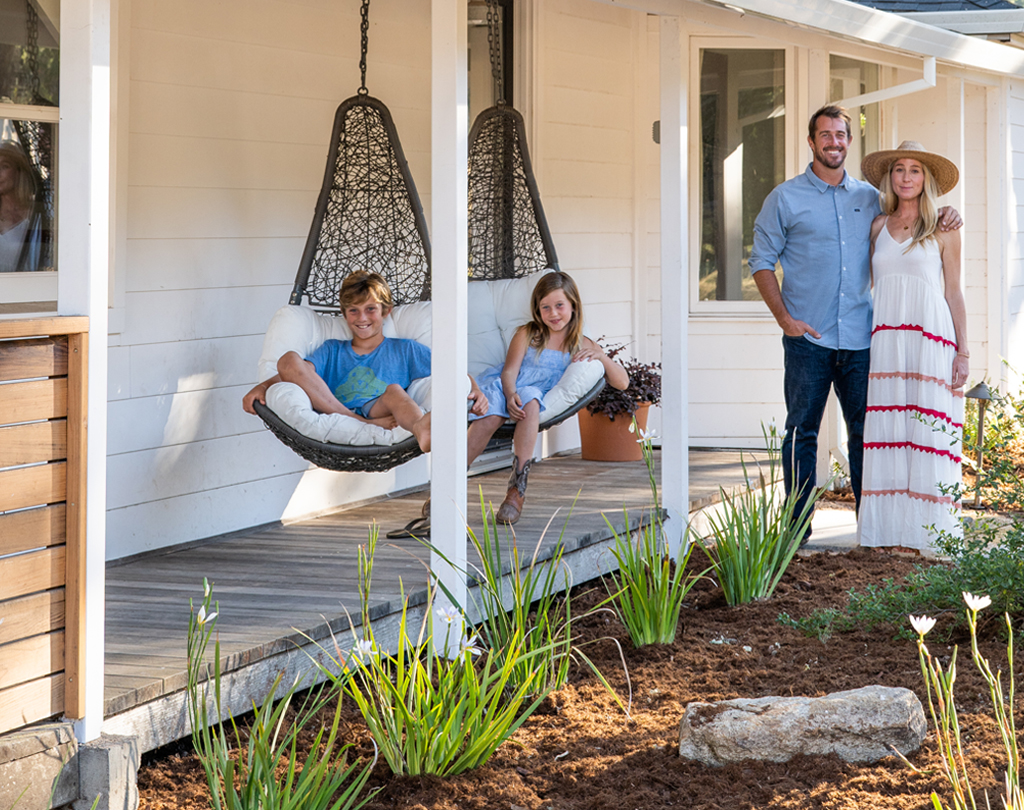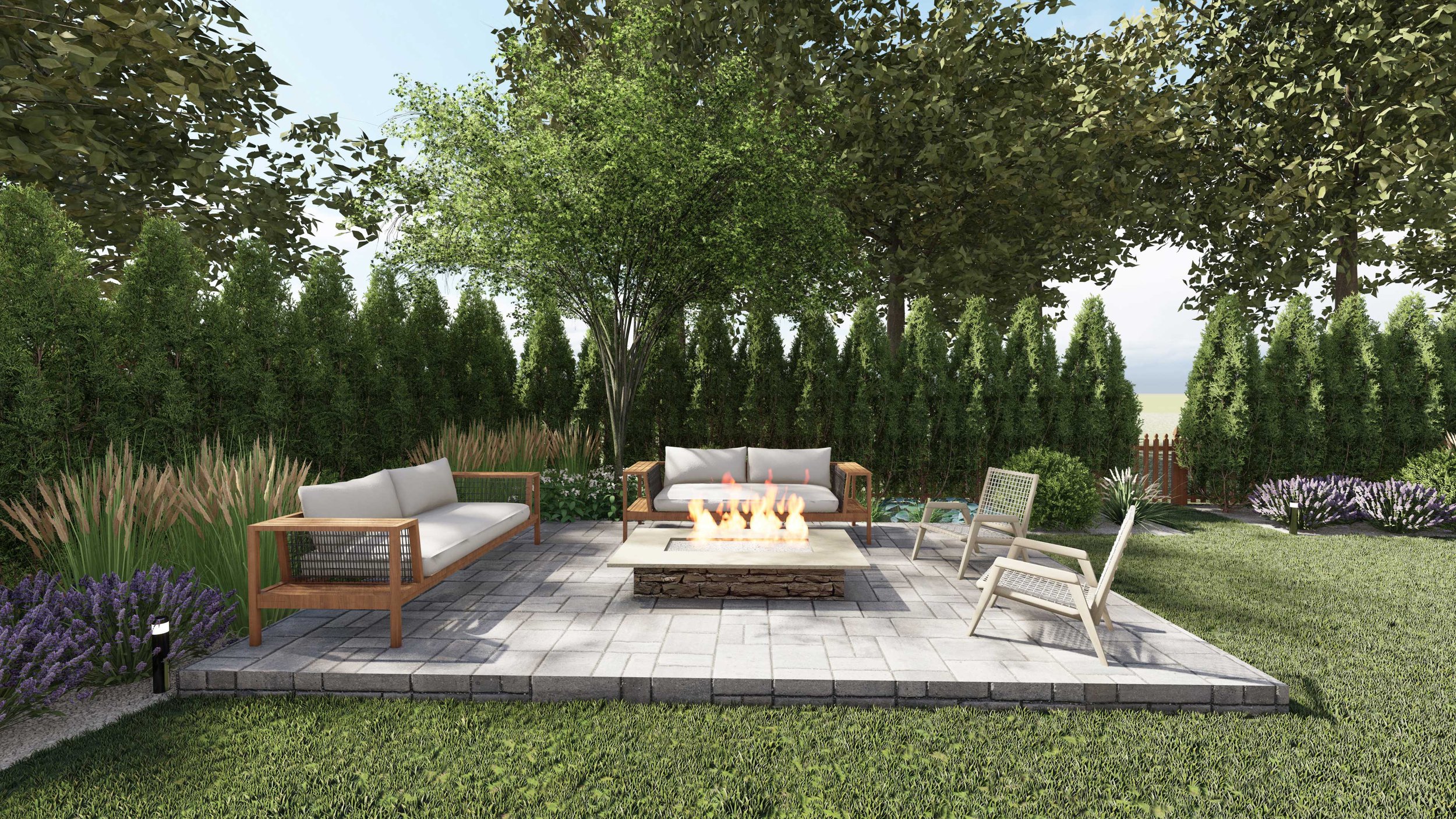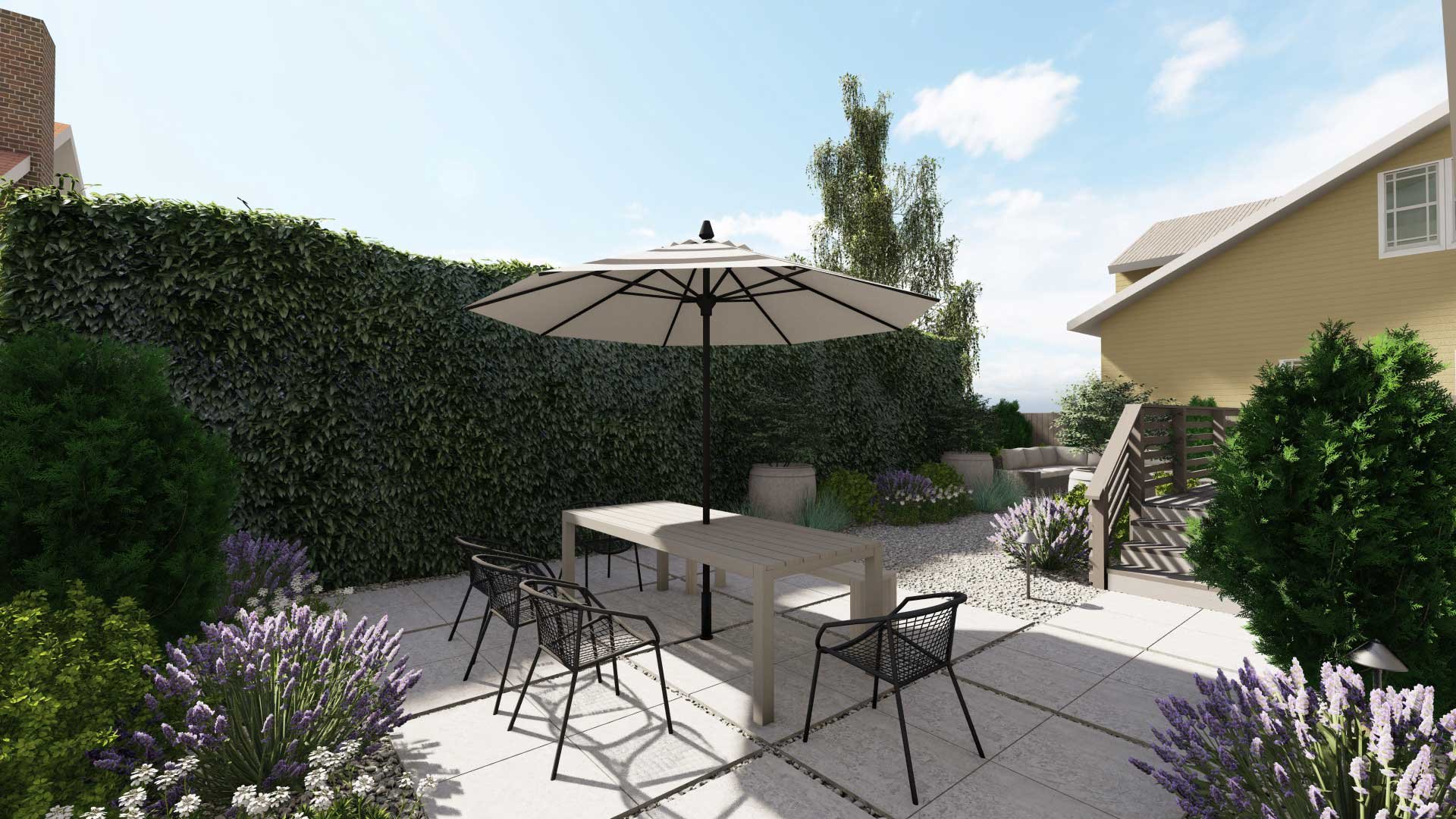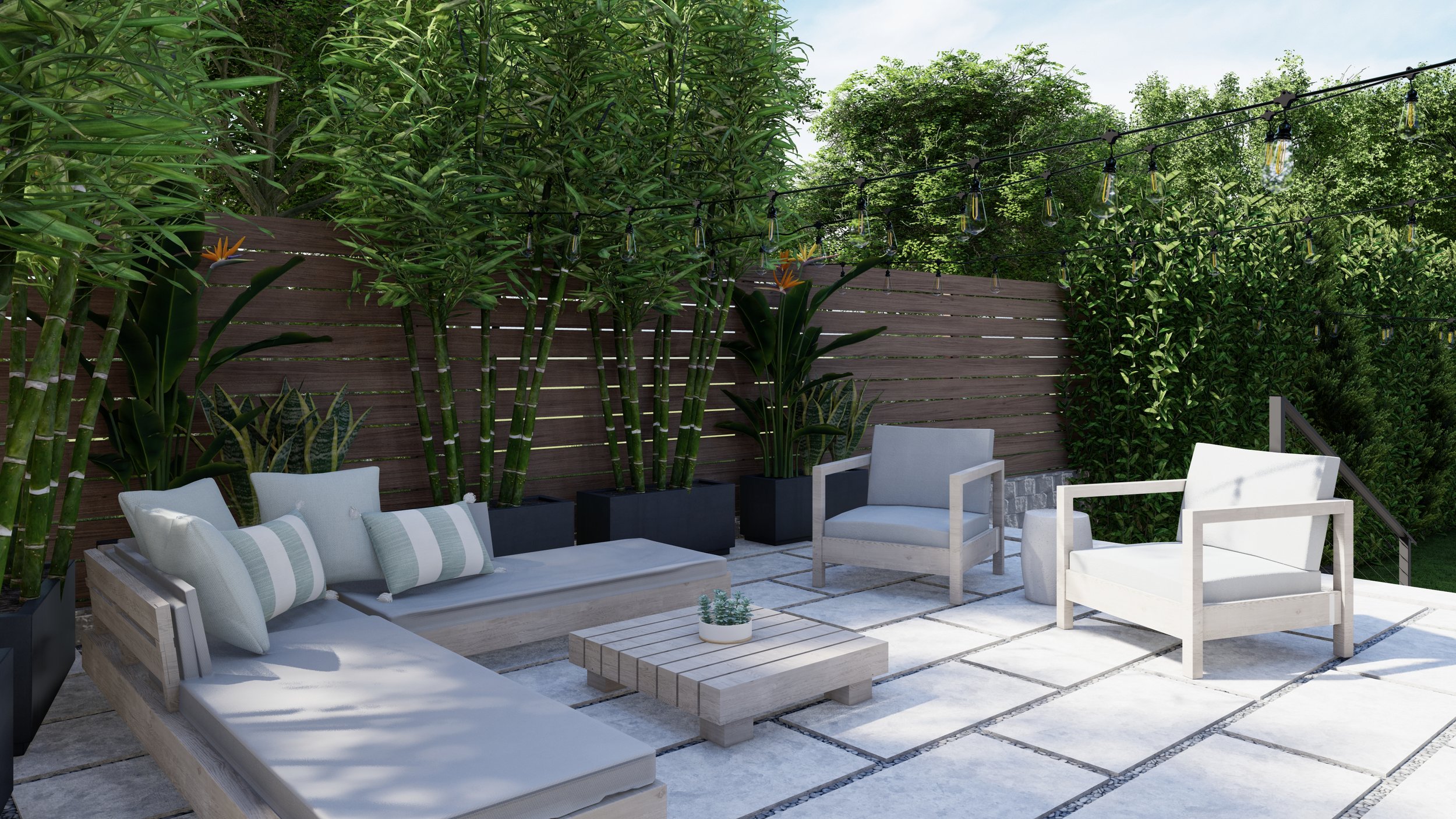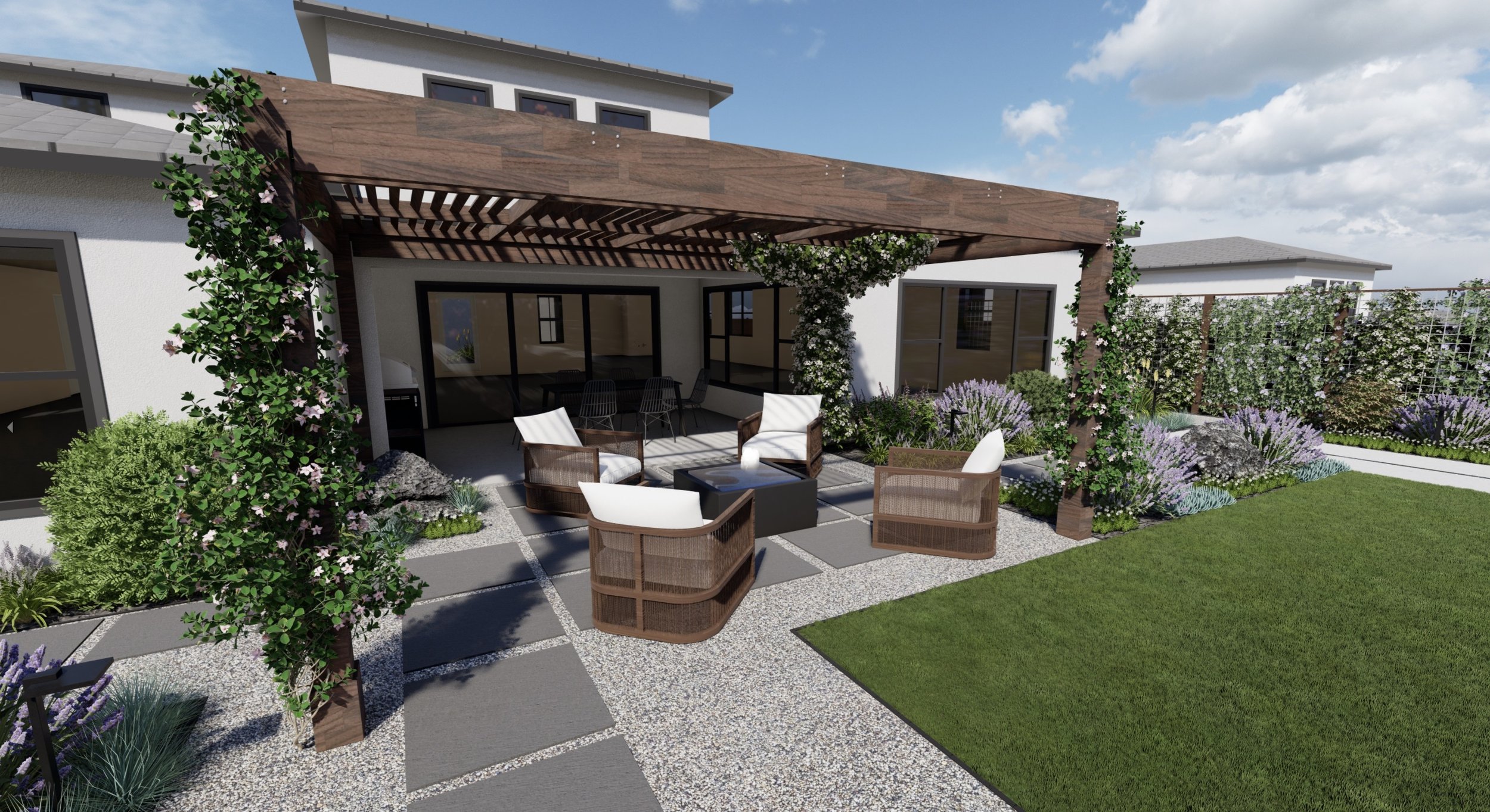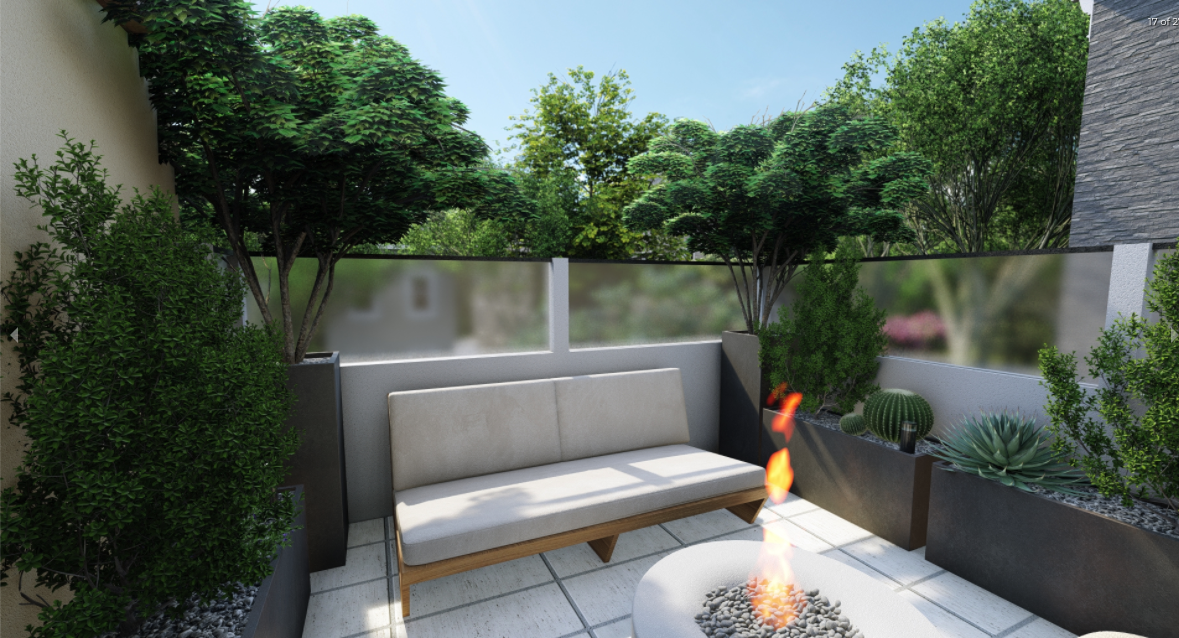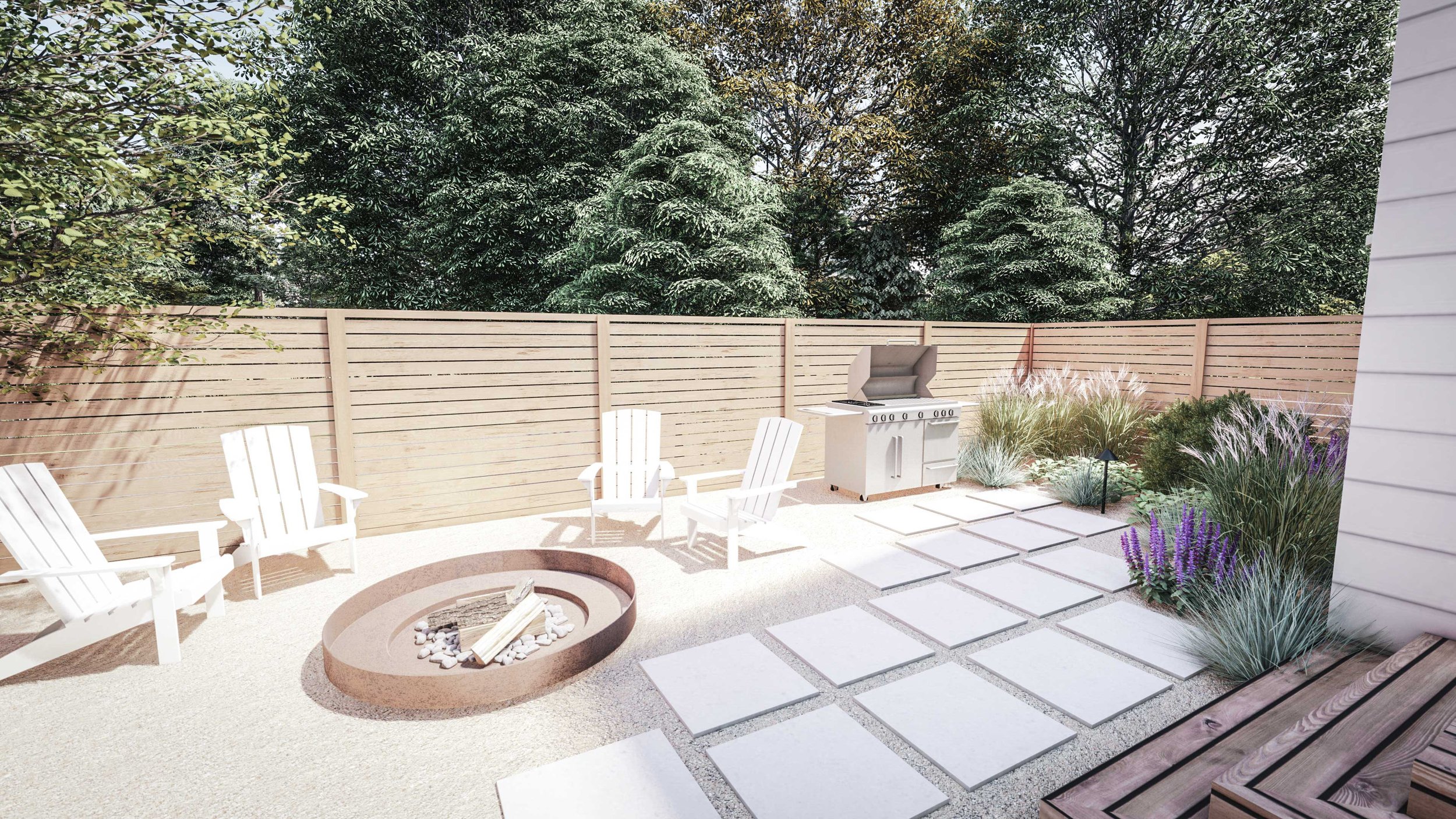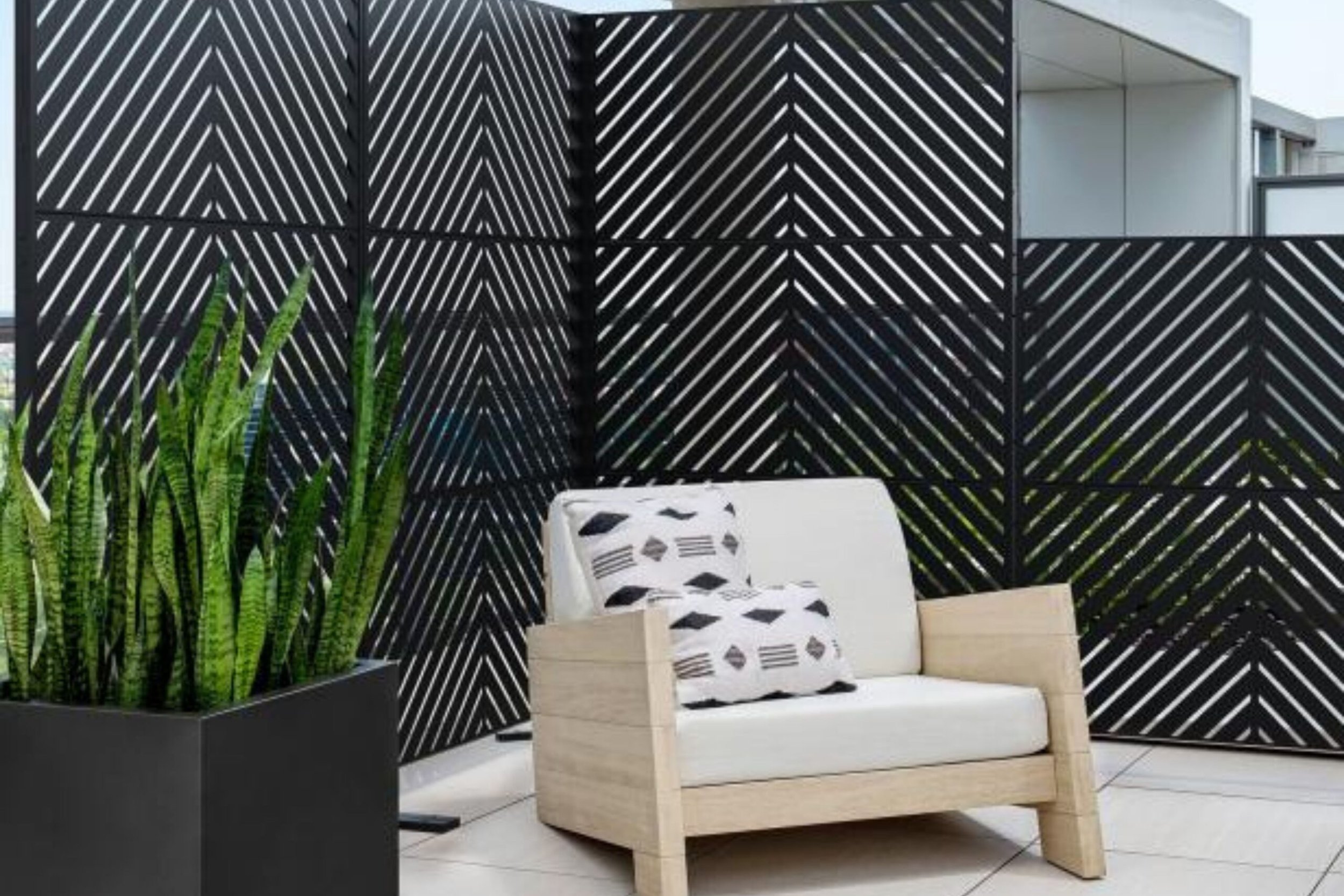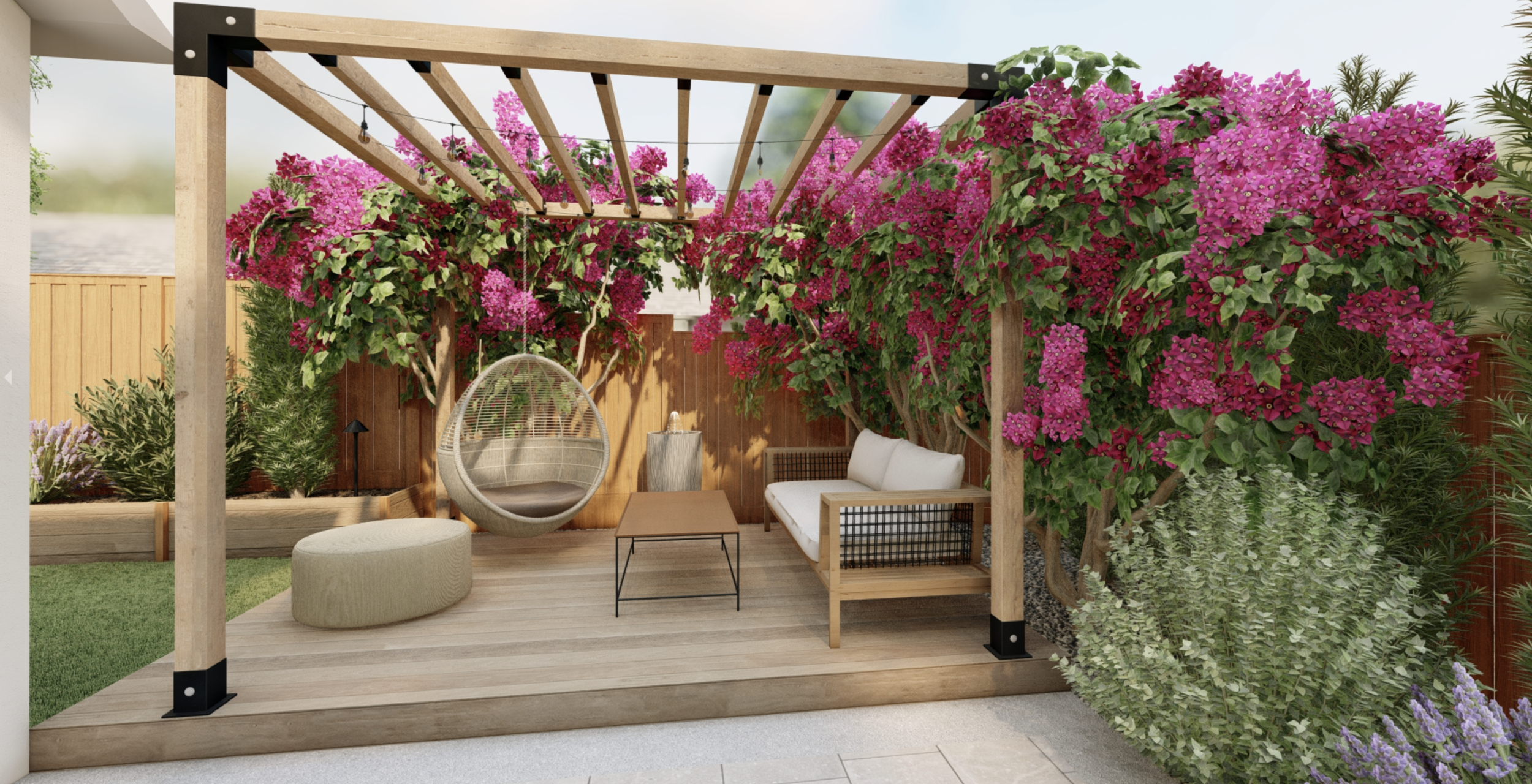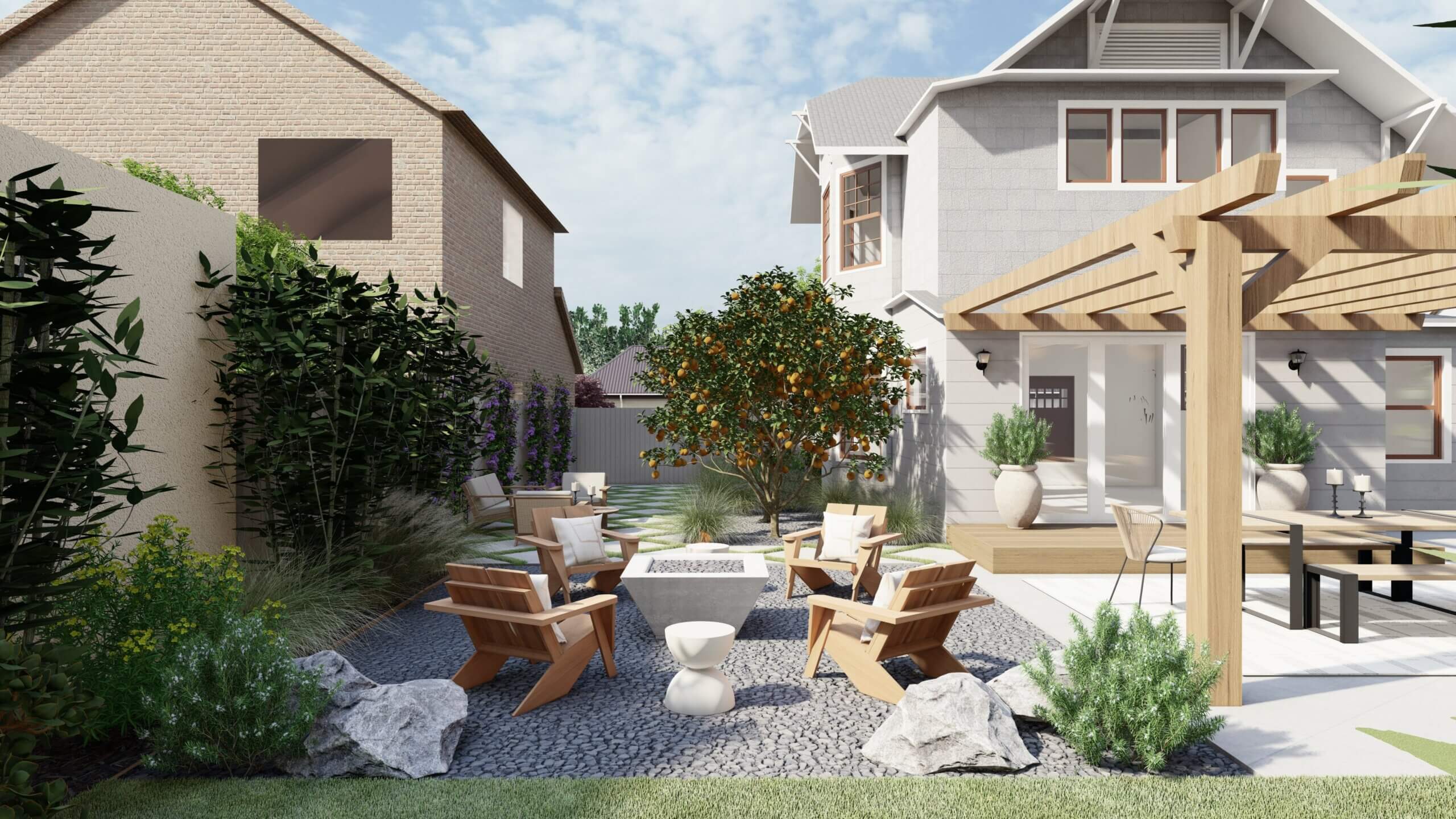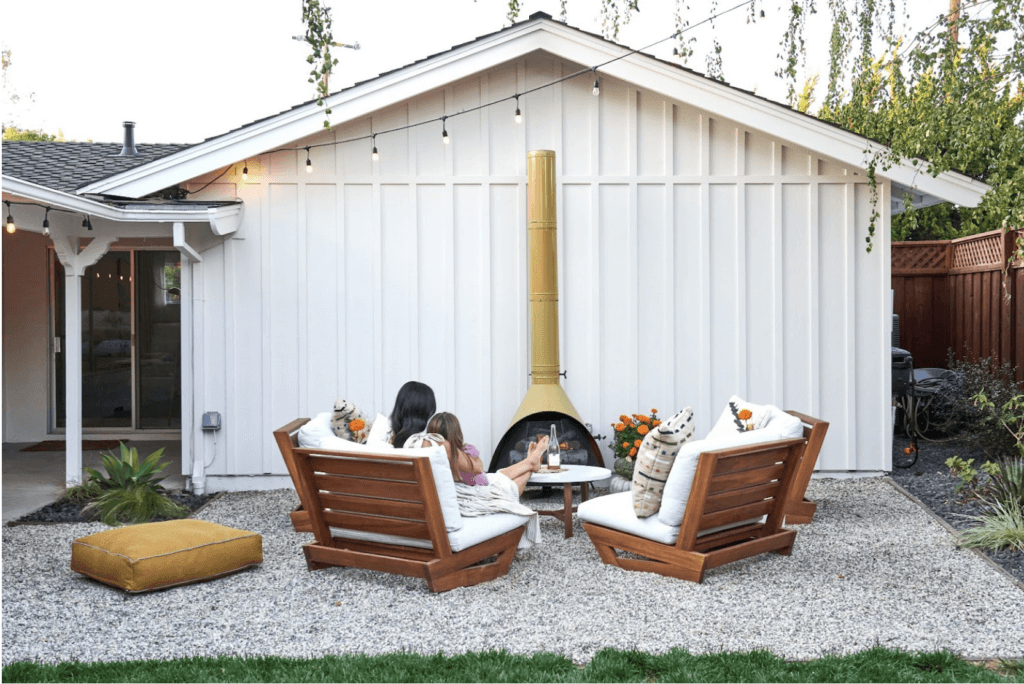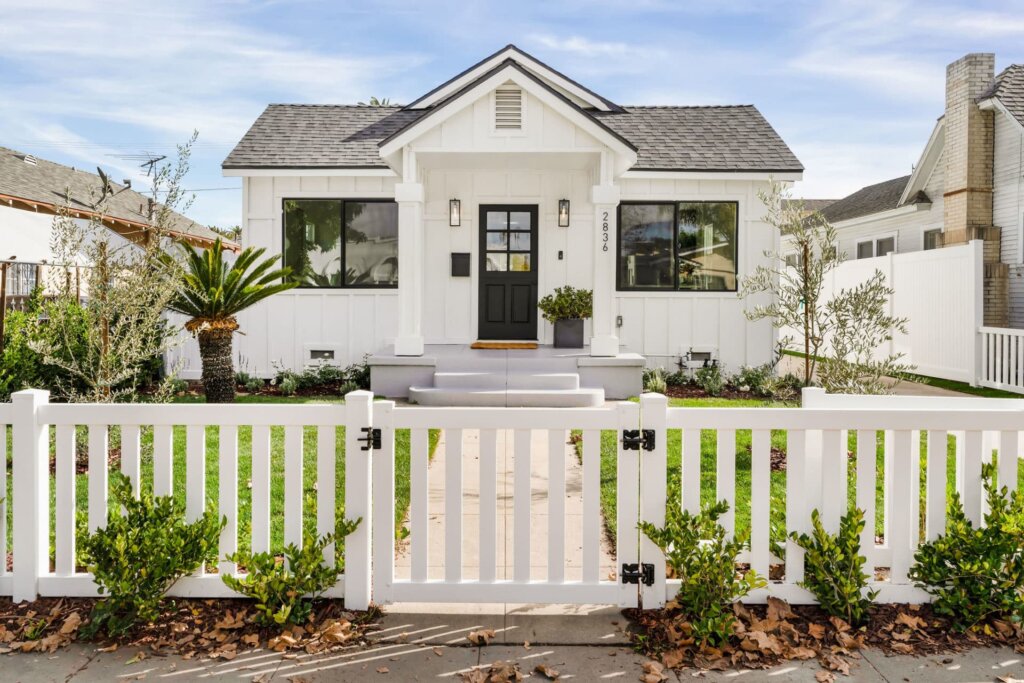
Ready to design your dream yard?
Get StartedYards are extensions of our homes, and like our homes, we rely on our yards for privacy.
Private spaces let us feel comfortable and free. Depending on your personality, privacy can be crucial to your enjoyment. Design ideas that create privacy can be highly effective, but often impact the feel and function of a space in the process.
Below, we’ll walk through a few privacy ideas, and share some tips on how to mitigate the impact of privacy measures on your overall landscape design.
Layered planting creates visual interest along with privacy via PlantMaster
Privacy Landscaping Pros and Cons
Designing for privacy involves creating barriers of one type or another. While barriers may block views from prying eyes, they also can impede circulation in a design. As a best practice, particularly when space is at a premium, designs should maximize free-flowing spaces and minimize barriers that separate them.
Barriers tend to shrink spaces. A small space enclosed by tall hedges feels even smaller and more isolated than a space that enjoys open edges and distant views. When designing for privacy, this inverse relationship between enclosure and perceived space must remain in mind – in general, and particularly in smaller yards, aim to maximize perceived space by maximizing openness.
While privacy measures impact perceived space internally, externally they affect how welcoming a landscape feels.
Opaque boundaries express a desire for privacy, while transparent edges invite the outside world in. When creating a “social front yard”, fences with large gaps like hogwire or row fences trade a lack of privacy for a wealth of sociability and openness.
If you don’t want to throw privacy entirely out the window, use design elements to create a semi-opaque boundary that maintains an inviting feel while leaving some interior spaces obscured from view.
Palm trees extend visual barrier past the legal maximum height for privacy walls in Phoenix, AZ front yard
Planting for Privacy
Our favorite tool for privacy, by far, is planting. Here are a few approaches you can take to boost privacy through planting design.
01 Formal Privacy Hedges
Tall hedges are the archetypal privacy planting. Evergreen shrubs sheared into a monolithic wall are unbeatable as far as year-round privacy goes—you’ll never see a thing through them. Going with a deciduous hedge means sacrificing privacy in the winter months, which may or may not be desirable.
Formal hedges strongly connote traditional landscape styles, notably formal European gardens and their American estate garden counterparts. If this is your vibe, formal hedges will go a long way toward achieving that look for you.
This style relationship being said, you see tall formal hedges all over the place – often, they are included in a yard as a purely functional measure, completely distinct in style and species from the rest of the yard. This is not necessarily a good thing from a holistic design perspective, but it does achieve the singular goal of blocking views and lends much more aesthetic appeal than a tall fence.
Formal vertical arborvitaes creates privacy around a seating area in this Massachusetts backyard design
We recommend tall, formal hedges under certain conditions:
Your style leans toward the formal and traditional
You have other geometric or symmetrical elements in your design (to make the geometric form of the hedge feel like part of the broader design language)
You can handle the upkeep of trimming hedges
Your climate supports the medium-water species that are commonly used for formal hedges
If you don’t have an overtly formal style, or don’t want to deal with the maintenance, we’d advise a different planted approach to privacy.
Informal hedges in this Seattle backyard landscape design with gravel and concrete paver hardscaping
02 Informal Privacy Hedges
They are like formal hedges, but with less fuss, and more shag. Leaving tall hedge plants in their natural form expresses a softer, more natural feel than a formal hedge. It also allows them to blend into a wide range of landscape styles – they’re much more style agnostic than formal hedges.
Plant a row of a single species planted at regular intervals wherever you need privacy. Upright, narrow shrubs like Pittosporum Silver Sheen, Laurus nobilis, or Ficus ‘Nitida’ are staples. We particularly like the low water Laurus in arid climates like California’s.
Consider plants’ mature width when you lay them out for planting. To avoid waiting on growth, you can buy plants semi-mature – this costs a bit extra, but can be worth the more immediate satisfaction.
Regardless of age, space plants prudently to avoid buying more than you need. Separating plants by their average mature width will eventually yield a gapless screen of foliage.
Giant bird of paradise are layered over holly fern, variegated shell ginger, and tree philodendron
03 Layered Planting
If monolithic blocks of a single species do not suit your style, you can achieve privacy through layered planting designs.
With this approach, privacy is more a byproduct than a central goal. Begin your design by thinking about your planting style and the spaces you’d like to define with planting. Privacy can be baked into this fundamental framework.
Place tall plants where necessary to block views, and layer scenes of lower ornamental plantings in front of them. The tall plants that do the actual work of providing privacy should look like intentional parts of an overall planting composition.
We like using tall ornamental grasses like Panicum or Miscanthus. They obscure views well enough, but still allow light in. They also convey a lighter, airier feel than dense, dark shrubs.
Smaller trees like redbuds, olives, and Japanese maples are also excellent for achieving privacy without creating a green wall. These trees offer clear views at trunk height, while blocking significant expanses with their canopies. Layer low- and mid-height perennials and shrubs beneath them, getting taller as you approach the edge of the canopy. This strategy gives you freedom to create the exact level of visual screening you need.
Using a layered planting approach, you can stagger your planting, placing some plants near and other further from the space to be hidden from view. This can help spaces to feel less hemmed-in by planting, while still offering the privacy you require.
Fast-growing bamboo in this Oakland, California back yard
04 Bamboo
Fast-growing bamboo stands in a category of its own. It reaches great heights extremely quickly, delivering privacy at light speed when it is an urgent need.
For those seeking a tropical feel, bamboo delivers. Use it as a backdrop to large-leafed, deep green understory species for a lush, private oasis.
Bamboo is not low maintenance – prepare to pick up a lot of leaves. It also is notorious for spreading into unwanted zones. Choosing clumping bamboos like Bambusa multiplex ‘Golden Goddess’ or ‘Alphonse Karr’ can mitigate this issue, but even those cultivars run the risk of tunneling under fences and popping up in neighbor’s yards.
If you need total security along property boundaries, keep bamboo in large plant containers.
A flowering vine creates a beautiful living wall between a neighboring side yard in Reno, NV
05 Vines
When looking to block views within a yard, dense vines on trellises are space-efficient and attractive. For those looking to distinguish separate patios for guest houses or ADUs, or looking to partition smaller yards, this is a good strategy.
Small trees in containers on this San Francisco roof deck
06 Container Plants
We would not recommend a long row of container plants – if you have a long boundary to screen, some sort of hedge or layered planting would be a better approach.
If you have only a narrow view to block, however, container plants can be a fabulous approach. Because they add height to plants, containers offer near instant gratification for those seeking privacy. They can also be moved to suit your needs, a particularly handy feature in small yards that need to occasionally accommodate large groups.
Structures
Structural solutions for privacy have the advantage of instant gratification – build them, and voila: you have privacy. The downside? Privacy structures often cost more than planting, and can impact both circulation and the perceived size of spaces in your landscape.
Let’s look at a few common structural privacy solutions.
Modern wood fence in a Denver, CO back yard
07 Privacy Fences
This is the most commonly built privacy solution. Along property boundaries, fences are a logical and advisable approach, albeit costly.
Classic vertical board fences offer total privacy. Paint them dark gray or black and add planting in front to utilize their privacy while reducing their visual prominence.
Horizontal board fences are designed with varying board widths, and can feature gaps of up to several inches between boards. These gaps mean the fence won’t totally block out light while still providing a decent level of privacy. Due to their higher cost of construction, we advise using horizontal board fences in short, targeted bursts, rather than along entire property perimeters. Put them where they’ll be highly visible, skip them where they won’t.
Metal outdoor privacy screen via The Architects Diary
08 Prefab Privacy Screens
Privacy screens are a great way to DIY structural privacy elements in your yard. Options like these from Veradek can make for great accent pieces in a design.
Like trellised vines, these screens require minimal space, and make for a great solution when areas of a yard need to be hidden from view. Use them standing alone, or integrate them into a pergola to block incoming views from the side.
Wherever you place them, be sure to use planting at their base and along their sides to knit them into the landscape – placed on their own, they can feel a bit like an add-on, rather than an integral part of a design.
This California backyard enjoys additional privacy and a stunning focal point thanks to a bourgenvilla-covered pergola
09 Pergolas
Pergolas can offer varying degrees of privacy. Clustering tall container plants around posts blocks views coming in from 45 degree angles, and vines allowed to grow robustly up columns and across pergola ceilings help to conceal the activity beneath.
Pergolas can also incorporate wood slats, prefab screens, or other permanent elements to close off sightlines on sides where privacy is necessary. On a more temporary level, pergolas can also utilize retractable windscreens that hang from cross beams.
Either of these measures to close off the sides of a pergola achieve privacy at the cost of expansiveness and connectivity. The space beneath the pergola feels smaller and more separated from the surrounding yard when it is walled off.
Privacy is a critical factor in any residential landscape, but so is the quality of the design itself: how it feels, how easy it is to move through, how well it accommodates your outdoor life. Take care to protect these qualities when designing for privacy. As is often the case, a little compromise – some privacy, some openness – usually yields the best results.
Designing Front Yard or Backyard Privacy Tailored to Your Yard
Yardzen’s award-winning online landscape design is tailored to homeowners’ geographic region and style preferences across the US. Our design process begins with understanding your space and a discussion of your budget and vision to minimize surprises when it comes time to build.
We want to make sure our design team can personalize your outdoor space, delivering a vision that includes what’s most important for your outdoor life and unique environment while keeping costs within range. We do this by utilizing our in-house Build Team made up of former contractors and our Pro Network of vetted professional landscapers across the country.
Ready to level up your home improvement with a professional landscape design? Create your design profile or explore our design packages today!
Ready to design your dream yard?
Get StartedFeatured Articles
How an Interior Designer Created “Outdoor Rooms” in Her Yardzen Yard

The Best Outdoor Cold Plunge Tubs & Ice Baths in 2024 (Chosen by Our Client...

Our Dreamiest Plunge Pool Yard Designs
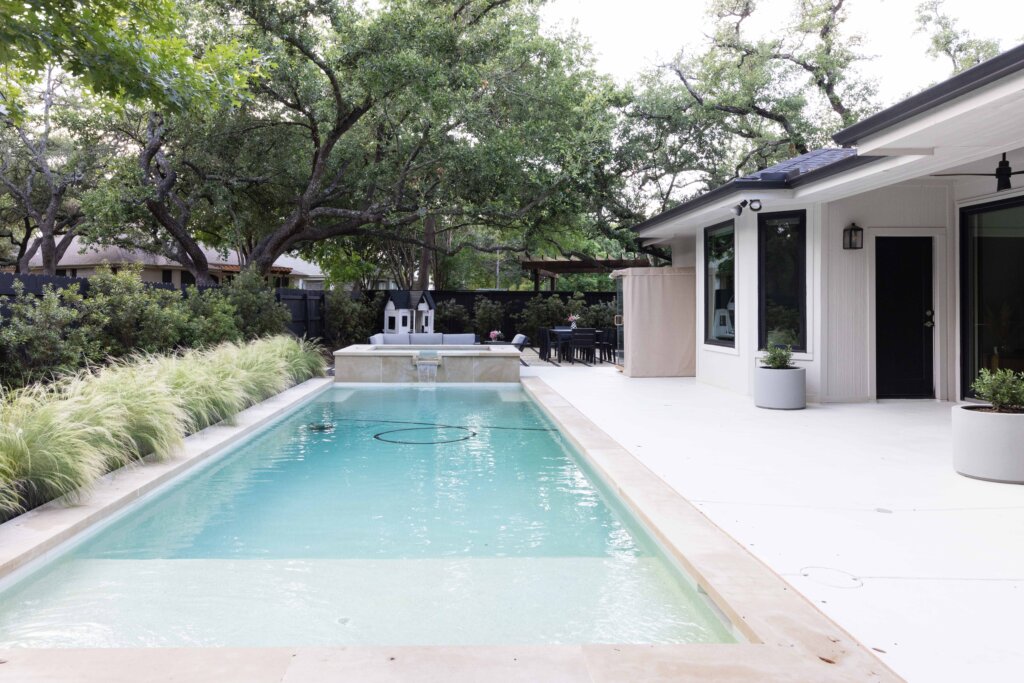
Our Favorite No-Grass Front Yard Ideas

